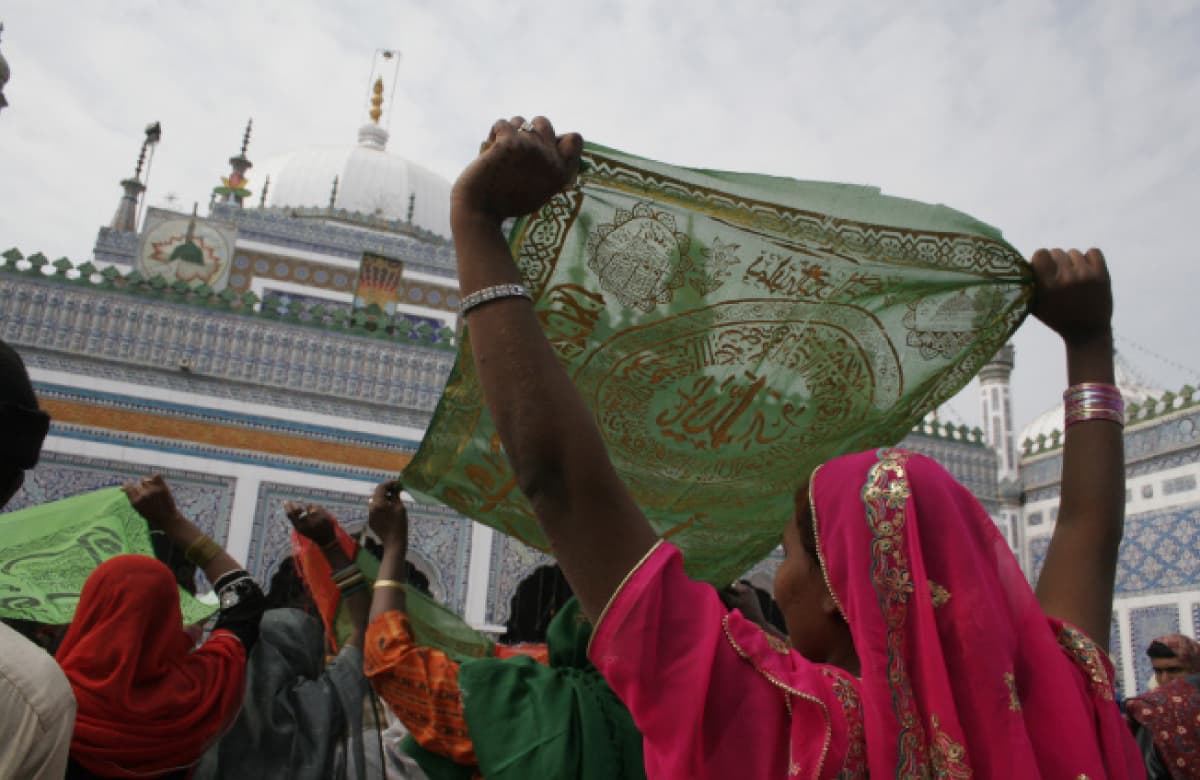
If you are looking for a nice bedside reading or something to occupy you during a short-haul flight then pick Raza Rumi’s Being Pakistani. It is not an academic treatise written by an expert for experts but an eclectic collection of essays on assorted aspects of life in and history of Pakistan written by a compassionate Pakistani who deploys a conversational prose to engage his readers. Like a mixed salad bowl, the book offers a variety of flavours. The readers are likely to enjoy some more than others. Experts in relevant subjects, however, may find Rumi skipping a few details here or there.
Being Pakistani is simultaneously a portrayal of Pakistan as a rich tapestry of cultures and an evidence of its author’s wide range of interests — from politics to music and from history to literature. The book, for instance, has essays on such different personalities as popular singer Runa Laila, fiction writer Intizar Hussain and legendary Sufi poet Shah Abdul Latif Bhittai.
Rumi walks the fine line between two extremes that are common in current characterisations of Pakistan. For most foreign commentators, the country is a cauldron of trouble about to implode; on domestic television channels, it is portrayed as a state under siege from adversarial foreign powers. Rumi assures foreigners that Pakistan is not the most dangerous country in the world and his message to television talk-show hosts is to calm down and not to blame the rest of the world for everything that has gone wrong in Pakistan.
The book comprises 22 essays divided into four sections –— one each on devotion, literature, arts, and the author’s own personal circumstances. Some of the essays on literature – mainly covering Urdu writers of both verse and prose – are eulogies. The essay on Intizar Hussain ends with a moving sentence describing his death as a personal loss for Rumi who likens the event to the removal of “an old jamun tree ... from the landscape” of one’s life. If Intizar Hussain is shown to be a beloved jamun tree then the word used to describe poet Fahmida Riaz is ‘rebel’. Rumi’s portrayal of her is of unbounded adulation. If knowing her is a “milestone” in his life then understandably “a single evening with [her] is akin to living a tale through and through”.
There is nothing wrong as such with writing eulogies of public figures one admires but here is a word of caution for readers: those looking for a critical appraisal of the work of those authors should look elsewhere.
The essay on Mustafa Zaidi is more of a gossip column with a tinge of investigative journalism than a critique of his poetry. The poet is well known for writing the following couplet:

(Traverse these stones, if you can, to reach me The path to my house is not studded by a galaxy)
Zaidi died under mysterious circumstances in 1970 at the relatively young age of 40 and, even half a century after his death, Urdu literati continue to spin a web of theories to speculate whether he died a natural death, committed suicide or was murdered. I wonder why Rumi chose to join the chattering classes trying to resolve this literary murder mystery.
Those who have seen Pakistan during the 1970s look back at that decade with nostalgia. Not that Pakistan was an ideal place to live in four decades ago but 11 years of Ziaul Haq’s rule, that started in 1977, turned the country into a land that, due to public flogging, censorship, strict dress code in public and a near ban on political activities, became unlivable for many thinking beings.
Rumi picks two music icons, Runa Laila and Alamgir, who serenaded Pakistanis during the 1970s, to showcase his nostalgic view of that decade. Both of them were of Bengali origin but chose to stay back in Karachi after their native East Pakistan became Bangladesh in the wake of a deadly debacle in December 1971. Humming some of Runa Laila’s songs – such as Mera Babu Chail Chabila – brings back sounds and sights of that long past era.
Rumi does mention her eventual decision to leave Pakistan and seek a break in Bollywood but what he probably does not know is that Runa Laila learnt the Sindhi language and sang in it too. Her most famous Sindhi album was based on the poetry of a well-known politician and custodian of a Sufi shrine, Makhdoom Muhammad Zaman Talibul Moula of Hala, whose late son Makhdoom Amin Fahim, an eminent parliamentarian in his own right, was married to Runa Laila’s older sister Dina (who died young of cancer).

Alamgir was a youth icon who sang and danced to pop numbers and tunes based on Bengali folk. Many a hip swayed in Pakistan when he took to black and white television screens and sang Dekha Na Tha Kabhi Hum Ne Ye Samaa. Those born after the 1970s can check out a YouTube video of the song to get a glimpse of the pop scene of Pakistan during that decade.
Rumi cites an interview of Intizar Hussain in which the writer said, “[I] had been writing one story all [my] life … the story of a lost identity, roots and the dilemmas of finding new anchorage on different soil.” In a way, this has been the story of Rumi’s own life since a failed assassination attempt on his life in 2014 and his subsequent escape to the United States. He seems to have been trying to find anchorage on American soil while trying to maintain his roots within Pakistan.
At a collective level, too, Pakistanis have experienced similar feelings of belonging and alienation vis-à-vis their own country sometimes because of the state’s efforts to enforce a single national identity. Rumi challenges “the idea of one nation, one religion” as the only basis for a Pakistani identity. He terms it a “political gimmick” initiated by the West Pakistani elite and later picked by successive military regimes. He raises his challenge by drawing upon multiple linguistic, cultural and ethnic traditions that inform local ethos in different regions that constitute present-day Pakistan.
As Rumi points out, this ethos shares many elements with that of other regions in the Subcontinent. He highlights this by referring to Bulleh Shah whose verses are familiar to almost every ear in Pakistan and are widely sung in the entire Indus plains. His aversion to ritualistic religious practices and orthodoxy strike a chord with the masses almost all over Pakistan. Rumi, then, connects Bulleh Shah’s poetry with that of Bhagat Kabir’s poetry from the Gangetic plains and with the chants of Lalon Fakir from Bengal. These three, and countless others belonging to Sufi and Bhakti traditions, lovingly confronted ritualistic religion be it practised by Hindus or Muslims. The result is that their popularity cuts across religions, regions, castes and ethnicities even today.
The English reading public, not a big pool in Pakistan, seldom shows the inclination to read Urdu literature or literature written in other Pakistani languages. It will be a measure of success of Rumi’s book if, after reading his essays, some of these readers pick a book of verse by Bulleh Shah or a collection of poems by Fahmida Riaz or a novel by Intizar Hussain. The same goes for Pakistan singers: I hope his book arouses interest among younger Pakistanis about such maestros as Mehdi Hassan.
Rumi is a prolific writer so one must hope that, during his continued sojourn in the United States, he delves deeper into the topics that he has touched upon cursorily in this book.
This was originally published in the November 2018 issue of the Herald. To read more subscribe to the Herald in print.










